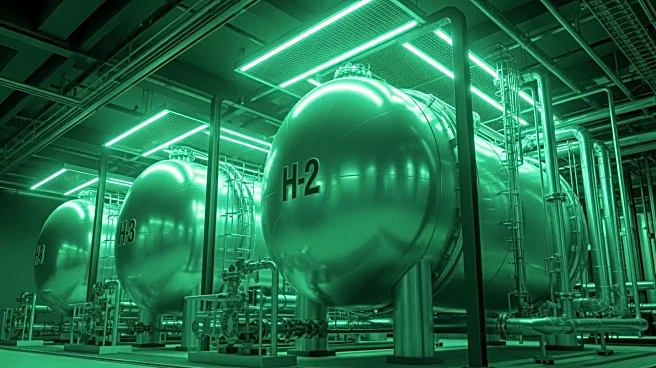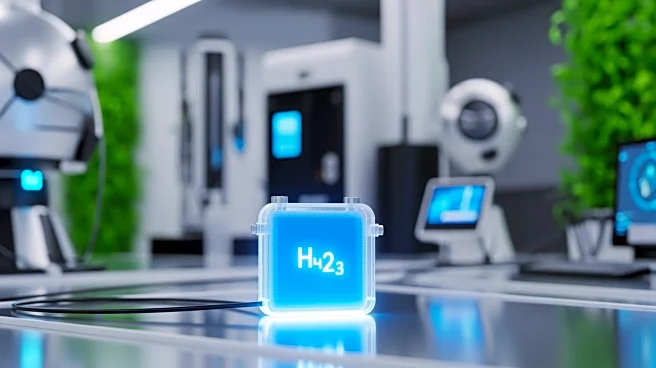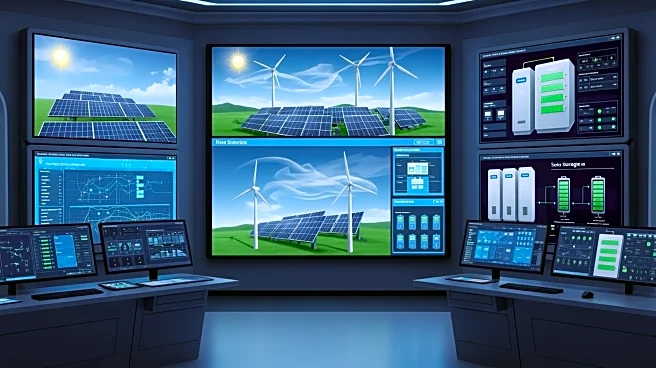What's Happening?
Researchers at City University of Hong Kong have made a significant breakthrough in green hydrogen production, unveiling a new type of cathode that can withstand fluctuating power levels during the electrolysis
of seawater. This development addresses the inconsistency in power production from renewable sources like solar and wind, which has historically hindered large-scale hydrogen production. The new system features a self-healing protective layer that prevents damage during energy input fluctuations, extending the life of electrolyzers. This technology, detailed in the Nature journal, uses abundant ocean water and renewable electricity, offering a clean alternative to fossil fuel-based hydrogen production. The system has demonstrated stability for over 10,000 hours and requires fewer expensive materials, making it more practical for commercial use.
Why It's Important?
The ability to produce green hydrogen from seawater could significantly reduce pollution and enhance energy independence for cities and companies. This technology offers a clean alternative to fossil fuels, potentially powering homes, vehicles, and factories. By cutting smog-forming emissions, it also contributes to improved human health. The development of resilient systems for green hydrogen production accelerates the transition to cleaner energy sources, which is crucial for addressing climate change and reducing reliance on fossil fuels. This innovation not only supports the hydrogen industry but also provides a roadmap for overcoming energy issues in other clean technologies, such as carbon capture and fuel synthesis.
What's Next?
If developed at scale, this technology could make clean hydrogen a viable replacement for fossil fuels in various applications, including shipping and home heating. This would lead to cleaner air and a cooler planet. The research lays a foundation for more resilient systems, potentially transforming the green hydrogen industry and other clean technologies facing similar energy challenges. As the technology becomes more commercially viable, it could drive significant changes in energy policy and industry practices, promoting sustainable development and environmental protection.
Beyond the Headlines
The breakthrough in green hydrogen production from seawater electrolysis highlights the potential for innovative solutions to address global energy challenges. It underscores the importance of investing in research and development to create sustainable technologies that can operate under fluctuating conditions. This advancement may also influence ethical considerations regarding resource use and environmental impact, as it promotes the use of abundant and renewable resources over finite fossil fuels.











